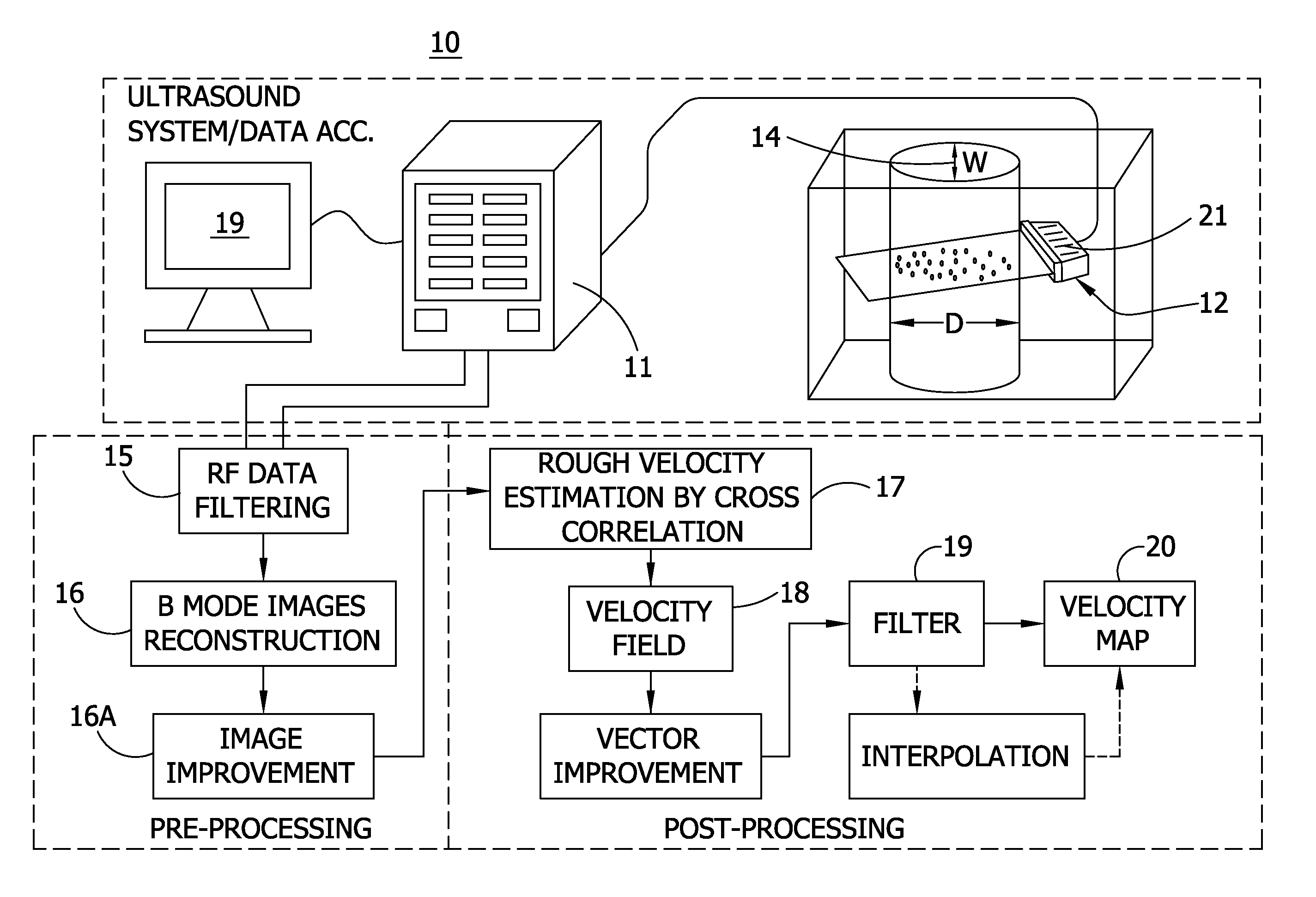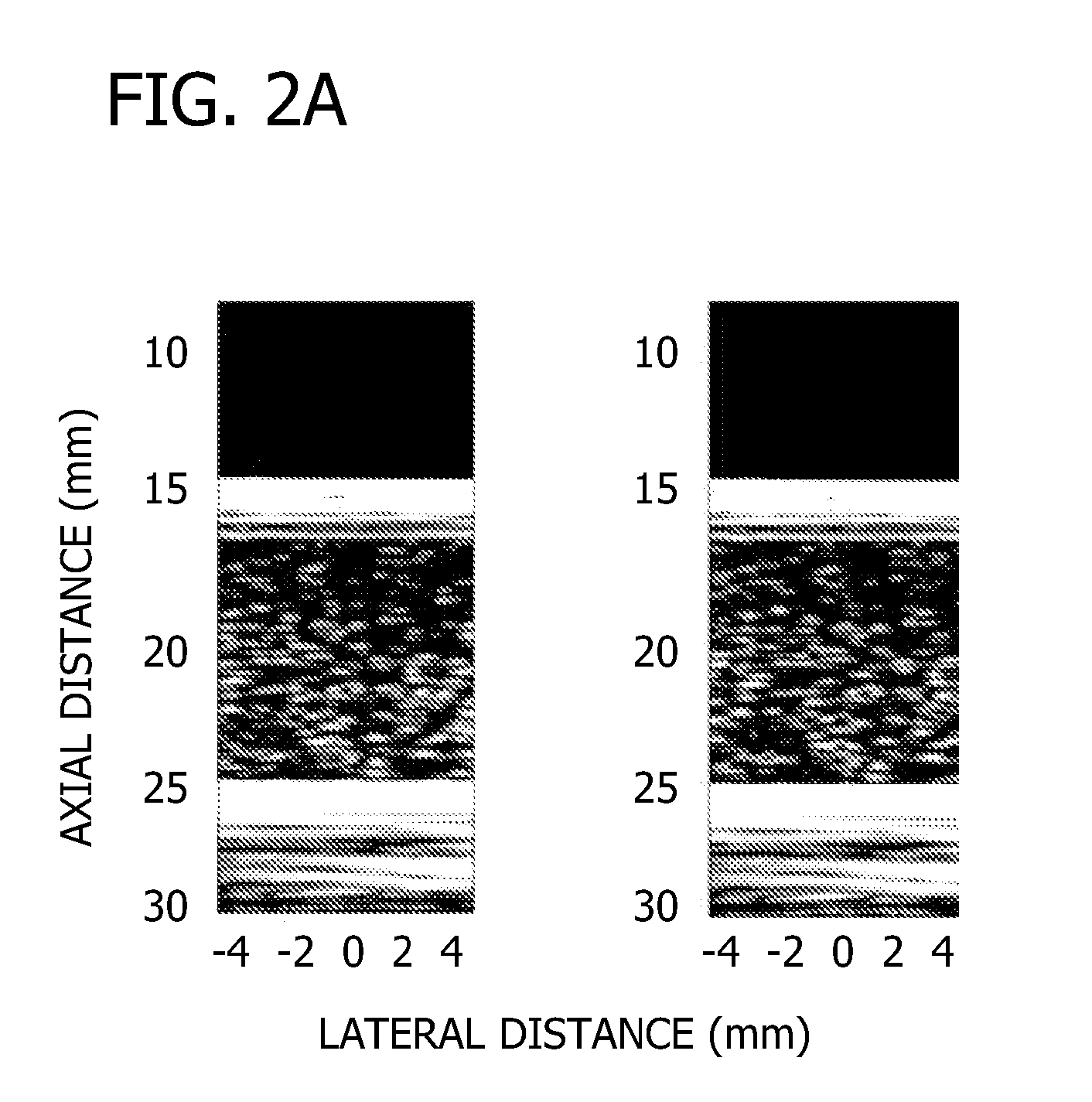Echo particle image velocity (EPIV) and echo particle tracking velocimetry (EPTV) system and method
a technology of echo particle and image velocity, applied in the field of echo particle image velocity and echo particle tracking velocity (eptv) system and method, can solve the problems of difficult flow measurement near the blood-wall interface, cumbersome use, and relatively poor temporal resolution
- Summary
- Abstract
- Description
- Claims
- Application Information
AI Technical Summary
Problems solved by technology
Method used
Image
Examples
example 1
[0085] Imaging limits of conventional commercial systems revolve around spatial accuracy and resolution, as well as inherently low frame rates, in turn, limiting the range of measurable velocities, the ability to capture transient flow phenomena, and the density of the resulting PIV vector field. An overall schematic of the Echo PIV system is shown in FIG. 1, and includes host of aspects: automatic-control (via computerized device, such as a PC, for example) of firing sequences; a 7.8 MHz 128-element linear array transducer with element pitch of 0.3 mm and bandwidth of 73%; RF data acquisition; B-mode image generation; and velocimetry algorithms for analyzing the RF-derived B-mode data. The Echo PIV system provides freedom in selecting a much higher range of frame rates (up to 2000 fps) than that of conventional medical ultrasound systems, as well as more freedom in selecting field of view (FOV) (30˜90 mm), number of transducer elements used to create ultrasound beams (6˜48 elements...
example 2
[0088] The system of FIG. 1 focuses on two components of Echo PIV of interest: uniformly fine spatial resolution over the entire field of view (FOV) and wide dynamic velocity range. Good spatial resolution prevents bubble images from appearing smeared in the B-mode image 16 (FIG. 1), and maximizes the quality of individual bubble images. This improves the quality of cross-correlation during PIV analysis and increases the accuracy of velocity vector calculation to produce the map 18. However, the exact value of spatial resolution that will be optimal for a particular imaging application will depend on specifications such as the range of velocities to be measured, the diameter of the vessel, and the purpose of the measurement, such as whether shear will be derived. Based on these values, certain transducer operating parameters can be set, such as imaging frequency, pulse length, depth of focus, number of elements used for transmit and receive, order of element firing, etc.
[0089] The ...
PUM
 Login to View More
Login to View More Abstract
Description
Claims
Application Information
 Login to View More
Login to View More - R&D
- Intellectual Property
- Life Sciences
- Materials
- Tech Scout
- Unparalleled Data Quality
- Higher Quality Content
- 60% Fewer Hallucinations
Browse by: Latest US Patents, China's latest patents, Technical Efficacy Thesaurus, Application Domain, Technology Topic, Popular Technical Reports.
© 2025 PatSnap. All rights reserved.Legal|Privacy policy|Modern Slavery Act Transparency Statement|Sitemap|About US| Contact US: help@patsnap.com



